
This is also the first Tortoise that I have ever installed, although this particular one has a bit of history. When my wife and I first moved to Atlanta in 1993, I immediately began building a layout in a spare room of our apartment. Although the layout never got farther than some L-girder benchwork, I actually purchased a Tortoise from a one of my favorite all-time hobby shops, Gandy Dancer's in Chamblee, GA. Well, fast forward 16 years to 2009--Gandy Dancers has been closed for almost a decade and the Tortoise finally comes out of its shell! Yes, as strange as it sounds, I just installed a brand new 16-year old turnout motor. Eventually, the computerized CTC system will be controlling all of the mainline turnouts via DCC, but for now the first one is controlled using a plug in 12-volt DC power supply and a simple DPDT slide switch.
Photos
The spline roadbed is not wide enough to mount a Tortoise, so I used a 3" x 3" piece of hardboard as a mounting surface. Here are all of the parts, including the hardboard showing the holes that were pre-drilled according to the template that came with the Tortoise. The two beveled holes are for the pair of #8 wood screws that will hold the mounting plate to the bottom of the spline roadbed:
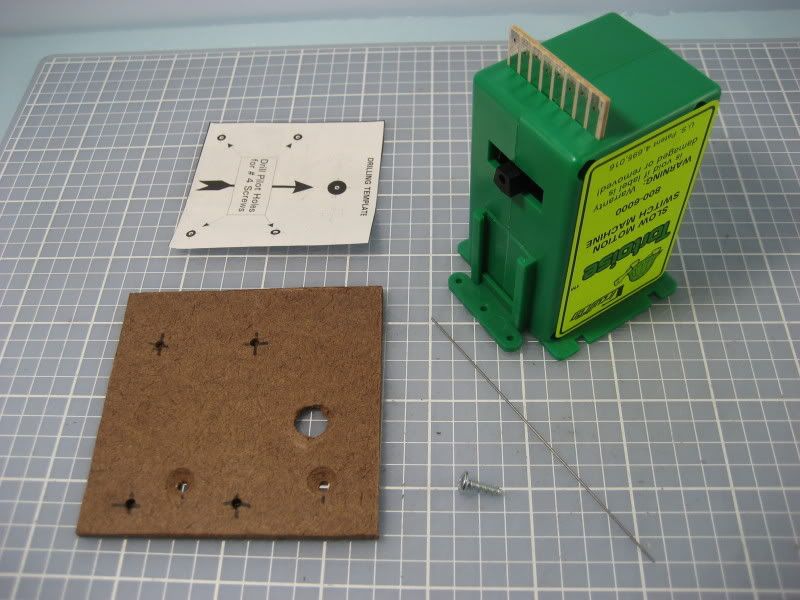
The next two photos show the mounting plate attached to the bottom of the spline roadbed:
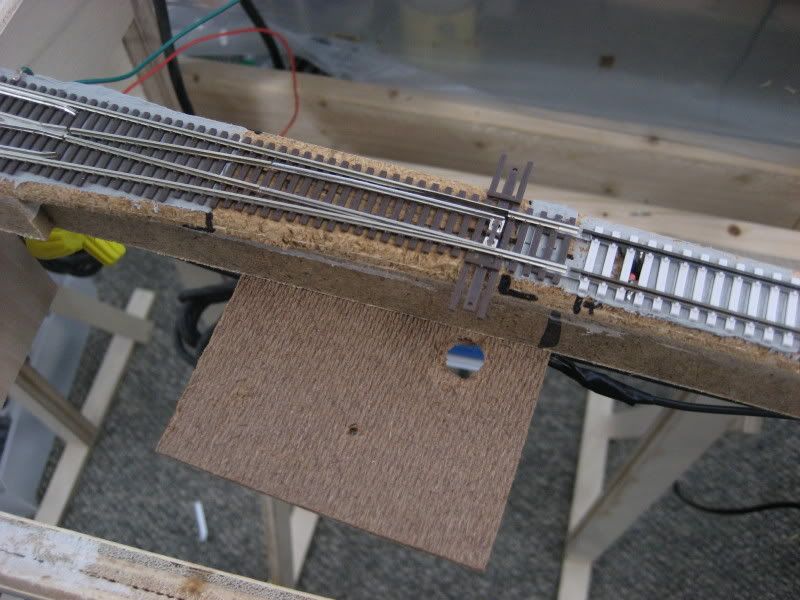
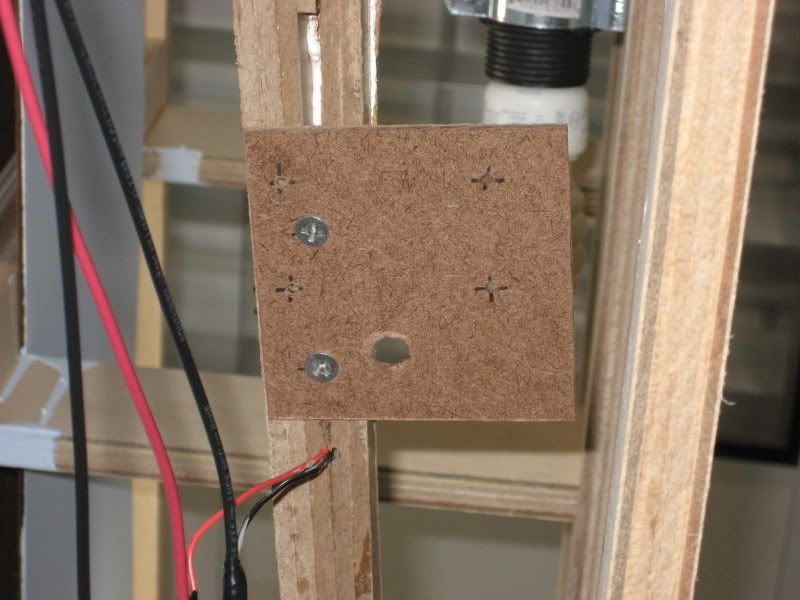
This photo shows the details of how the Tortoise is wired. I am using one set of contacts inside the Tortoise to power the frog of the Atlas #10 turnout. I used green 20-gauge solid wire for all of the Tortoise wiring. You can also see the bottom of the DPDT slide switch that is being used to control the turnout until a permanent DCC solution is installed. The heavy red & black wires are the track bus; the white wires running off to the right are the leads from the plug in 12-volt DC power supply:
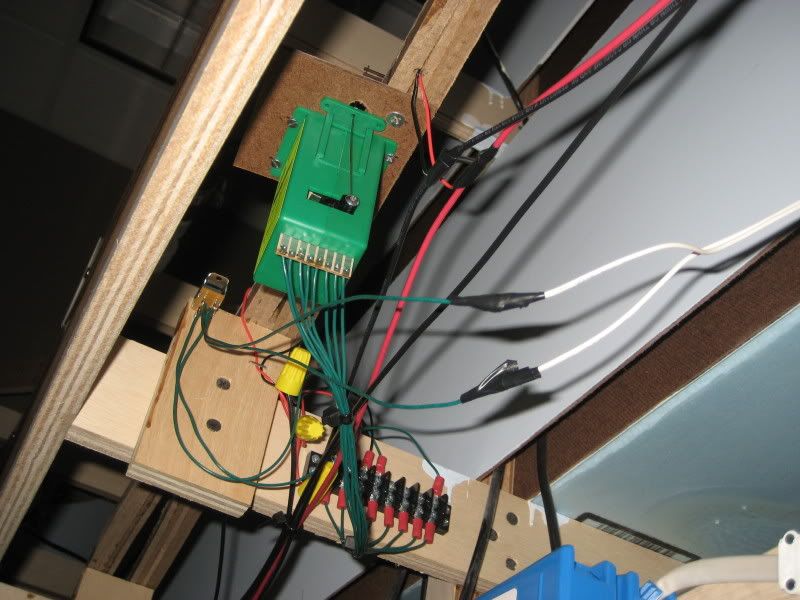
Overview of the Tortoise installation from above:

Closeup showing the .025 wire coming up from the Tortoise fulcrum, through the pivot and the hardboard mounting plate, and through the end of the throwbar on the turnout. I had to bend the wire a bit at the top to keep the throwbar from rubbing against the adjacent ties. Before scenery begins, I will protect the throw wire with a piece of blue foam that will wrap around the wire:
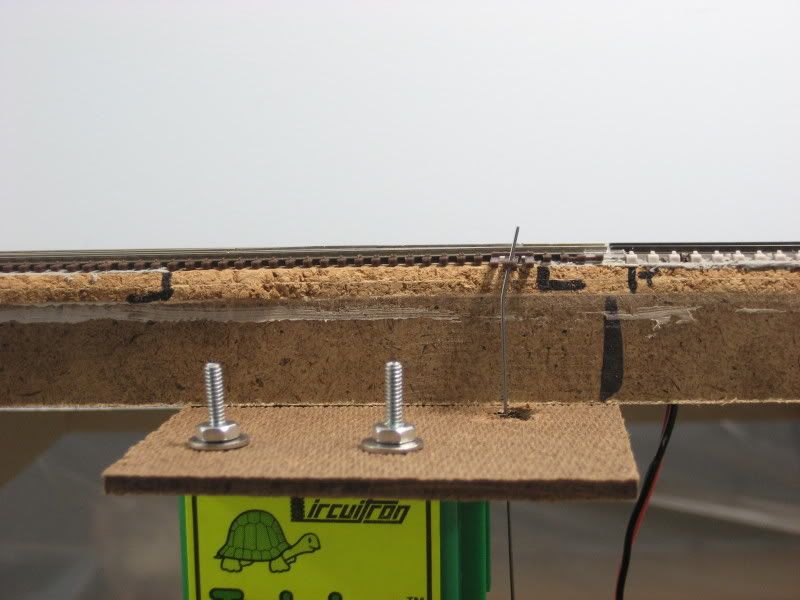
.



